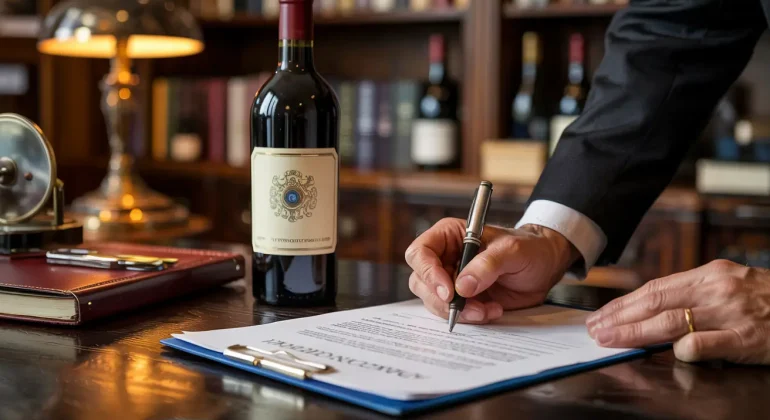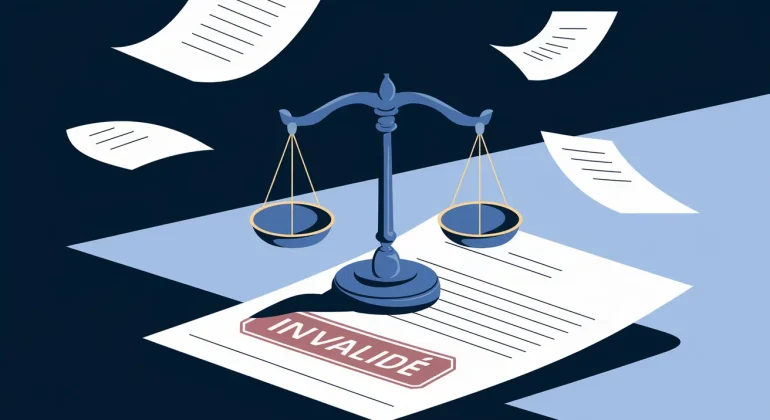Pre-litigation in trademark law: anticipating to avoid costly disputes
Introduction
In the field of intellectual property, trademark protection is a major issue for businesses. Beyond registering a trademark, there are strategies to anticipate conflicts and avoid costly litigation. Pre-litigation in trademark law is a crucial phase in which preventive actions help resolve disputes before they escalate into court proceedings. This process is essential to secure a company’s rights and preserve its reputation while avoiding unnecessary legal expenses.
This article explores the role of pre-litigation in trademark law, how it helps avoid conflicts, and the practical steps companies can take to use it effectively.
Protecting your brand : a strategic imperative
Protecting a trademark is essential to guarantee a company the exclusive use of its distinctive sign. This protection, obtained through registration with the INPI in France and the EUIPO in the European Union, helps prevent identity theft and preserves the uniqueness of the company’s image.
1.1 Standing out effectively in a competitive market
A registered trademark is a symbol of consumer recognition and loyalty. It ensures the company that its sign is protected against unauthorized use, allowing it to distinguish its products and services from those of competitors.
1.2 A brand as a valuable asset for the company
A trademark is not just a sign; it is also a valuable asset. A protected trademark enables the company to strengthen its market position, enhance its image, and even generate revenue through exploitation, assignment, or licensing.
Pre-litigation in trademark law: a strategic response before trial
Pre-litigation refers to the steps taken before any court proceedings in order to resolve a dispute amicably or preventively. The goal is to settle a potential trademark conflict without resorting to lengthy and costly legal procedures.
2.1 Identifying risks before they become disputes
One of the main tools in pre-litigation is monitoring. By quickly identifying any trademark infringement, the company can respond effectively to protect its rights before the situation worsens. Monitoring can cover both registered trademarks and unauthorized uses of distinctive signs on online platforms such as social networks, where third parties might use similar or identical marks for commercial purposes, as well as on e-commerce sites.
2.2 Reacting early: cease-and-desist letters and negotiation as key tools
When a conflict is detected, the first pre-litigation action is often to send a formal warning letter. This letter requests the other party to cease using the disputed trademark. If this step fails, a coexistence agreement or similar negotiation may be considered.
Pre-litigation: a lever to prevent legal escalation
3.1 Controlling costs and avoiding lengthy procedures
Judicial procedures can be extremely expensive in terms of legal fees and time. Pre-litigation helps identify issues as they arise and resolve them before they escalate into lawsuits. This avoids significant costs associated with court proceedings.
3.2 Protecting brand image discreetly
Legal disputes can be perceived negatively by consumers. Even a publicly won lawsuit can tarnish a brand’s image. Pre-litigation helps maintain a positive reputation by resolving conflicts discreetly and swiftly.
3.3 Optimizing resources: time, energy, finances
Legal conflicts demand considerable human and financial resources. Turning to pre-litigation allows the company to stay focused on its core business and avoid diverting energy toward a prolonged dispute.
- Trademark disputes : hidden but formidable costs
Costly disputes extend beyond legal fees and can severely affect a company’s strategy. Key examples include :
- Legal and expert fees: Lawyers’ fees, court expenses, and expert reports can amount to substantial sums
• Disruption to business operations: The company spends significant time defending itself rather than growing its business
• Missed opportunities: Engaging in a conflict can block partnerships, damage brand image, and lead to lost economic prospects
Anticipating such issues helps a company avoid the burden of a lengthy legal process, which may end up being far more expensive than preventive measures.
Building an effective strategy to avoid costly disputes
5.1 Implementing rigorous trademark monitoring
Implementing a trademark monitoring system is essential. This includes regularly checking new trademark filings and online activity. It helps detect potential infringements before they become major issues.
5.2 Smart negotiation with similar brands
In certain situations, it may be wise to negotiate coexistence agreements with companies using similar trademarks. This allows for clear boundaries regarding brand usage and helps prevent conflicts.
5.3 Acting without litigation: the amicable path as first response
If a conflict arises, sending a warning letter is often a prudent first step. If this proves ineffective, mediation or negotiation can help resolve the issue without resorting to court proceedings. These amicable approaches are usually quicker and less expensive.
5.4 Getting the right legal advice early On
It is advisable to consult a trademark law specialist to receive precise and tailored legal advice. A detailed legal assessment will help determine the most appropriate pre-litigation strategy.
Pre-litigation tools: anticipate to better protect
The following tools can be used to avoid costly trademark disputes:
- Legal and commercial watch: Monitoring trademark databases and online platforms
• Trademark opposition: Challenging the registration of similar trademarks upon filing
• Mediation and amicable resolution: Using mediation services to reach a settlement without litigation
Conclusion : preventing means protecting your brand for the long term
Pre-litigation in trademark law is an essential tool for any company aiming to protect its brand identity without resorting to costly legal disputes. Through proactive measures, companies can minimize legal risks, maintain their brand reputation, and optimize internal resources.
Dreyfus & Associates offers recognized expertise in pre-litigation and trademark dispute management. We support our clients in designing preventive strategies to anticipate risks and effectively protect their intellectual assets.
Nathalie Dreyfus and the Dreyfus team.
FAQ
- What is pre-litigation in trademark law ?
Pre-litigation refers to all amicable actions taken before initiating legal proceedings to resolve a conflict related to the use of a trademark. It includes monitoring, risk analysis, sending cease-and-desist letters, and negotiating agreements. This phase often allows for resolving disputes without going to court, thereby reducing costs and preserving business relationships.
- Why monitor competing trademarks ?
Monitoring competing trademarks is essential for any business that wants to protect its identity effectively. A watch system allows companies to quickly identify new trademark applications that may cause confusion with their own, enabling them to act promptly to avoid disputes. It also helps detect unauthorized use of the brand online, on social media, or in points of sale, whether it involves imitation or abusive exploitation. Regular monitoring is also a tool for early detection of counterfeiting, which can seriously damage a company’s reputation and revenue if not addressed quickly.
- How can trademark conflicts be avoided ?
It is crucial to check, before filing, that the chosen trademark does not infringe on existing rights. The application should clearly define the targeted products, services, and territories. Regular monitoring helps identify similar uses or filings. In case of risk, swift action such as an opposition or cease-and-desist letter is necessary. Finally, being assisted from the outset by a specialized attorney helps secure the entire protection strategy.











